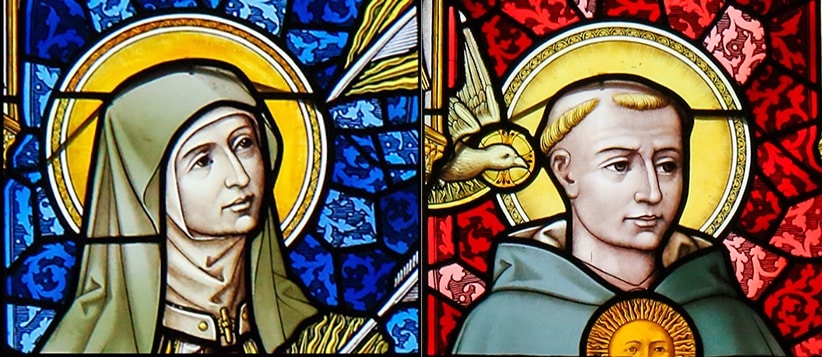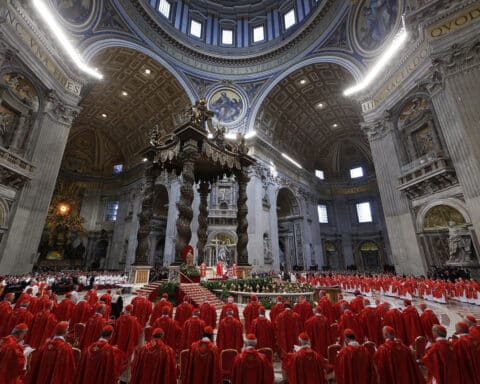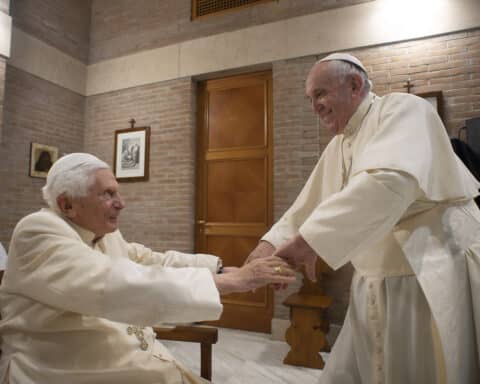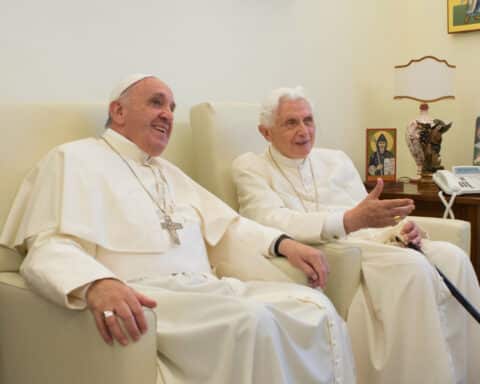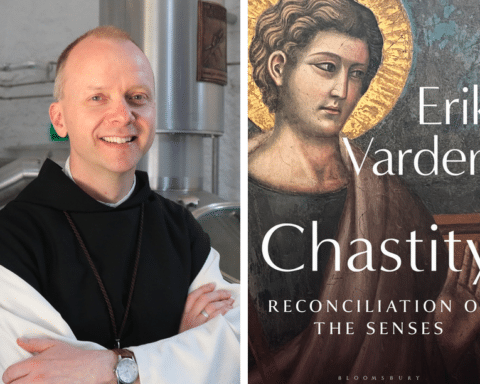
Admittedly, though, much depends on how you define “mystical experience.” One survey found 35% of the respondents agreeing that they had sometimes felt “very close to a powerful, spiritual force that seemed to lift you out of yourself.” That might be a mystical experience, but it also might be the experience of looking up at a starry sky and saying, “Gosh!”
A more rigorous account comes from the late Dominican Father Jordan Aumann, a theological expert on mysticism. The “first requirement” for genuine mystical experience, he wrote, is “immediate contact with God.” There are degrees of intensity to the experience, he added, but any true mystical experience comes from God.
All this is worth bearing in mind when approaching a new, novel and very attractive — both physically and in its contents — prayer book assembled by Kathryn Jean Lopez. Bearing the title “A Year With the Mystics” (Saint Benedict Press, $44.95), this is not a how-to-do-it manual for becoming a mystic, but it does bring readers into the company of genuine mystics and other holy persons, and — who knows — it might dispose some users to receive this particular gift if God were to give it.
“Let him bring you to a peace that surpasses all understanding,” advises Lopez, a widely published author, including with Our Sunday Visitor, and a certified spiritual director, who adds modestly, “I want you to spend some time with some friends of mine who have helped me know our God better.”
She concedes that not all the sources quoted in her book are full-fledged mystics, but all have had, and express, what might be called leanings in that direction that they wish to share with others. That aside, they’re a diverse lot in respect to time, place and circumstance. They include St. Teresa of Ávila and Dorothy Day, St. John of the Cross and Mother Angelica, St. John Paul II and Caryll Houselander, St. Pio of Pietrelcina and St. Thomas Aquinas, Catherine de Hueck Doherty and St. Teresa Benedicta of the Cross (Edith Stein), and many others both ancient and modern.
What they have to say is sometimes bland, but also sometimes startling, as when St. Jane Frances de Chantal, foundress of the Visitation order, advises a correspondent to cultivate “a calm, peaceful uselessness” or when the anonymous 14th-century author of “The Cloud of Unknowing” remarks matter-of-factly that “God may be loved, but not thought.”
The volume is organized on a day-to-day basis, with each excerpt followed by a brief consideration and closing prayer by Lopez. Although this adds up to enough material for a year, the days aren’t dated and readers can use the contents pretty much when and in whatever order they wish. In this the book has a family resemblance to the mystics themselves, who tend to be a spontaneous and unregimented lot, yet singularly open to the promptings of the Holy Spirit.
“Do not set expectations for growing in prayerful encounter with God,” Lopez counsels. “Trust him and stay close to the sacraments. At a time when people describe themselves as ‘spiritual but not religious,’ the mystics draw us into deeper prayer at the heart of the Church. And that, whatever our station in life, is exactly where God wants us.”
Russell Shaw is a contributing editor for Our Sunday Visitor.

